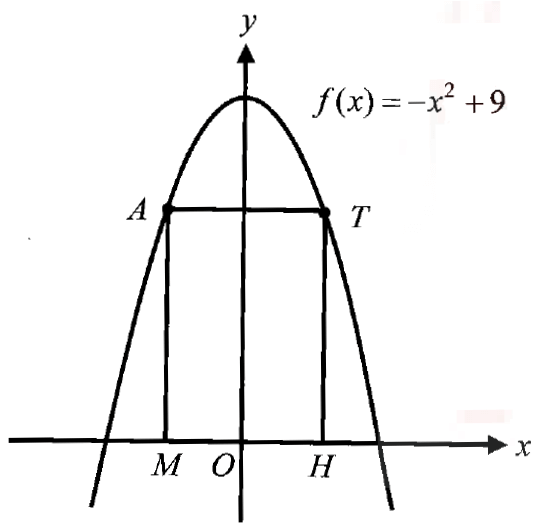SOLVING QUADRATIC EQUATIONS BY COMPLETING THE SQUARE
To solve quadratic equations using completing the square method, the given quadratic equation must be in the form of
ax2 + bx + c = 0
The following steps will be useful to solve a quadratic in the above form using completing the square method.
Step 1 :
In the given quadratic equation ax2 + bx + c = 0, divide the complete equation by a (coefficient of x2).
If the coefficient of x2 is 1 (a = 1), the above process is not required.
Step 2 :
Move the number term (constant) to the right side of the equation.
Step 3 :
In the result of step 2, write the "x" term as a multiple of 2.
Examples :
6x should be written as 2(3)(x).
5x should be written as 2(x)(5/2).
Step 4 :
The result of step 3 will be in the form of
x2 + 2(x)y = k
Step 4 :
Now add y2 to each side to complete the square on the left side of the equation.
Then,
x2 + 2(x)y + y2 = k + y2
Step 5 :
In the result of step 4, if we use the algebraic identity
(a + b)2 = a2 + 2ab + b2
on the left side of the equation, we get
(x + y)2 = k + y2
Step 6 :
Solve (x + y)2 = k + y2 for x by taking square root on both sides.
Example 1 :
Solve the following quadratic equation by completing the square method.
9x2 - 12x + 4 = 0
Solution :
Step 1 :
In the given quadratic equation 9x2 - 12x + 4 = 0, divide the complete equation by 9 (coefficient of x2).
x2 - (12/9)x + (4/9) = 0
x2 - (4/3)x + (4/9) = 0
Step 2 :
Subtract 4/9 from each side.
x2 - (4/3)x = - 4/9
Step 3 :
In the result of step 2, write the "x" term as a multiple of 2.
Then,
x2 - (4/3)x = - 4/9
x2 - 2(x)(2/3) = - 4/9
Step 4 :
Now add (2/3)2 to each side to complete the square on the left side of the equation.
Then,
x2 - 2(x)(2/3) + (2/3)2 = - 4/9 + (2/3)2
(x - 2/3)2 = - 4/9 + 4/9
(x - 2/3)2 = 0
Take square root on both sides.
√(x - 2/3)2 = √0
x - 2/3 = 0
Add 2/3 to each side.
x = 2/3
So, the solution is 2/3.
Example 2 :
Solve the following quadratic equation by completing the square method.
(5x + 7)/(x - 1) = 3x + 2
Solution :
Write the given quadratic equation in the form :
ax2 + bx + c = 0
Then,
(5x + 7)/(x - 1) = 3x + 2
Multiply each side by (x - 1).
5x + 7 = (3x + 2)(x - 1)
Simplify.
5x + 7 = 3x2 - 3x + 2x - 2
5x + 7 = 3x2 - x - 2
0 = 3x2 - 6x - 9
or
3x2 - 6x - 9 = 0
Divide the entire equation by 3.
x2 - 2x - 3 = 0
Step 1 :
In the quadratic equation x2 - 2x - 3 = 0, the coefficient of x2 is 1.
So, we have nothing to do in this step.
Step 2 :
Add 3 to each side of the equation x2 - 2x - 3 = 0.
x2 - 2x = 3
Step 3 :
In the result of step 2, write the "x" term as a multiple of 2.
Then,
x2 - 2x = 3
x2 - 2(x)(1) = 3
Step 4 :
Now add 12 to each side to complete the square on the left side of the equation.
Then,
x2 - 2(x)(1) + 12 = 3 + 12
(x - 1)2 = 3 + 1
(x - 1)2 = 4
Take square root on both sides.
√(x - 1)2 = √4
x - 1 = ±2
x - 1 = -2 or x - 1 = 2
x = -1 or x = 3
So, the solution is {-1, 3}.
Kindly mail your feedback to v4formath@gmail.com
We always appreciate your feedback.
©All rights reserved. onlinemath4all.com
Recent Articles
-
Digital SAT Math Problems and Solutions (Part - 138)
Apr 07, 25 07:22 AM
Digital SAT Math Problems and Solutions (Part - 138) -
Implicit Differentiation Problems and Solutions
Apr 06, 25 11:54 PM
Implicit Differentiation Problems and Solutions -
Digital SAT Math Problems and Solutions (Part - 137)
Apr 06, 25 08:42 AM
Digital SAT Math Problems and Solutions (Part - 137)
